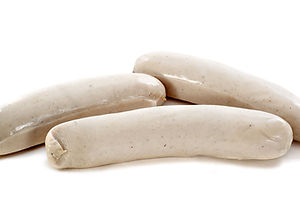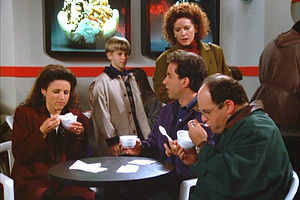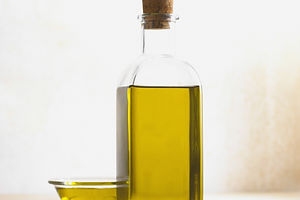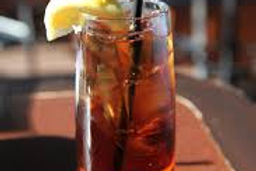Whole is well - Monaco
a complete approach to wellness
Cheaters - "Healthy" food options that
will kill your diet.
It is easy to be cheated by misleading food labelling and engrained misconception. I hope the following will throw some light on food options that might seem sensible but in fact will ruin your diet. Food manufacturers have for a very long time been giving us misleading and sometimes downright false information about what foods that will help us become slimmer. A lot has been written about these misrepresentations and there are many new rules about what is ok to write on a label and what is not but we’re still a long way away from getting it right.
Here are some examples of common wrong food choices that we might be making when buying food or ordering in a restaurant.
Caesar salad
You might think that because it’s a salad than it necessarily means that it’s healthy and slimming. That would be true if you avoided the dressing that turns your perfectly innocent salad bowl into a whopping 300-400 calories and 30gr of fat.
Fix it: order the dressing, croutons and the cheese on the side and use 2 table spoons of dressing and just a dash of Parmesan cheese and try to avoid the croutons.


Fresh Smoothies
What seems to be healthy and innocent once again can be deceiving. Fresh smoothies purchased in the juice bar can easily pack 80gr of sugar and 350-400 calories, no protein and occasionally fruit concentrates rather than fresh fruit.
Fix it: make it at home where you control what goes in the blender. If you must have it in the juice bar choose the smallest cup they serve in, ask for fresh fruit only and if possible some protein powder added.
Energy Bars
Great many of these are just ‘upgraded’ candy bars with extra calories and a heftier price tag. Often they come in compact size that leaves people hungry.
Fix it: read the label. Choose bars that contain less than 200 calories and at least 5gr of protein. This helps provide energy when the sugar surge fades.


Sugar Free Drinks
Always sounds like a no-brainer for unpacking that fat. A couple of reasons why it’s not necessarily always true. First of all we can be tempted to think that because they are sugar free then it’s safe for us to ‘compensate’ by having more of something else which is not as healthy (for example a larger portion of chips or dessert). Secondly, sugar-free often means sweetened. Even when the sweetener is of a natural (non-chemical or processed) origin it still creates more food and especially sweet-tasting food cravings.
Fix it: Drink water. Look what it does to flowers.
Enhanced or Flavoured Water
Very often enhanced by vitamins but some brands also add sugar which makes it a calorie rich beverage. Remember that even when it’s naturally flavoured it will still pack calories.
Fix it: drink water…. And when you feel like something else, read the label and make sure no sugar is added. Or it's very easy to make your own flavoured water, just add some fresh mint and a few slices of lemon or blueberries for a healthier version.


Whole Fat Milk
Here’s what’s in a cup of milk:
Whole milk (3.25%) = 150 cal., 8g fat, 5g sat. fat
Reduced-fat (2%) = 130 cal., 5g fat, 3g sat. fat
Skim (non-fat) = 80 cal., 0g fat, 0g sat. fat
Fix it: if you have to drink milk (I personally recommend avoiding dairy products wherever possible), dilute whole milk with 2% for a while, then 1%, then skim, until you get used to the taste of non-fat milk.
2% Milk Latte
You might think that trading the 2% milk with the whipped cream is being clever but it will cost you about 600 calories and 15gr of saturated fat. And then guess what happens when you add the caramel syrup…
Fix it: if milk-free/sugar free black coffee doesn’t cut it for you… try green tea


Chicken or Turkey Hotdogs or Sausages
Nutritional value will vary between brands and the label may say ‘less fat’. But don’t let the label fool you. Make sure to read it.
Fix it: compare different brands and choose the one that has the highest meat content and the lowest fat. Still remember, it is processed food which if you must have, minimise to only a few times a year.
Breakfast Muffins
It’s true that they’re a better choice than doughnuts for breakfast but remember they’re still a flour and sugar blob. One muffin can contain 500 calories and 10 tea spoons of sugar.
Fix it: if you can live without, look for 100 calorie muffins. Preferably whole grain or better yet gluten free (if you can find this unicorn).


Low Fat Granola
Generally speaking this will only have 10% fewer calories than the ‘normal’ version and will still be packed with sugar. One of the things to remember is that when the label says ‘low fat’ we might be encouraged to eat more.
Fix it: choose whole grain and make sure it’s sweetened with fresh fruit and devoid of added sugar. Or make your own granola with natural sweetener.
Low Fat Frozen Yogurt
Known to be rich in protein and calcium but yet many have loads of sugar added. You might remember the Jerry Seinfeld episode….
Some brands add 30 or more grams of fructose, sucrose, or other sweeteners. Compare plain to fruited yogurts to see the difference between the sugars that are naturally in milk and added sugar listed on the label.
Fix it: a 250gr portion should contain less than 100 calories and 10gr of sugar.


Multi Grain Products
When you come across this term in relation to bread or pasta or waffles don’t forget to read the label. Having more than one type of grain is no guarantee that some or all of the grains used are not refined (for example white flour). Refined grains are stripped of fibre and many of their nutrients and better be avoided.
Fix it: look for 100% whole-grain on the label (Oats, Wheat) as the first ingredient. Or choose a brand containing more fibre in comparison to others.
Light Olive Oil
Almost anything labelled ‘light’ or ‘diet’ is meant to mislead you and meant to entice you if you’re watching your weight. In this case ‘light’ olive oil means lighter in colour not in calories.
Fix it: as always, compare the labels.


Added Omega-3 Foods
Some yogurt, milk, eggs, cereal, and other foods brag of added omega-3. But they may not have the kinds of omega-3 best known to help your heart: EPA and DHA. Or there's only a very small amount -- about as much as in one small bite of salmon. Instead, they may have ALA from vegetable sources. ALA is not as potent or beneficial as DHA/EPA.
Fix it: Stick to natural foods high in Omega-3. It has 100 times more omega-3 than is in a serving of fortified yogurt. Vegetarians could consider algae-derived omega-3 or flax seed supplements.
Iced Tea
The antioxidants in iced tea don't make it a health food. Too much added sugar can turn this drink into a diet buster. A 330ml bottle can have more than 200 calories and 59 grams of sugar.
Fix it: Skip "sweet tea" in favour of unsweetened iced tea. Lemon or artificial sweeteners add zing without calories. Herbal and berry teas taste mildly sweet without the sugar bomb.


